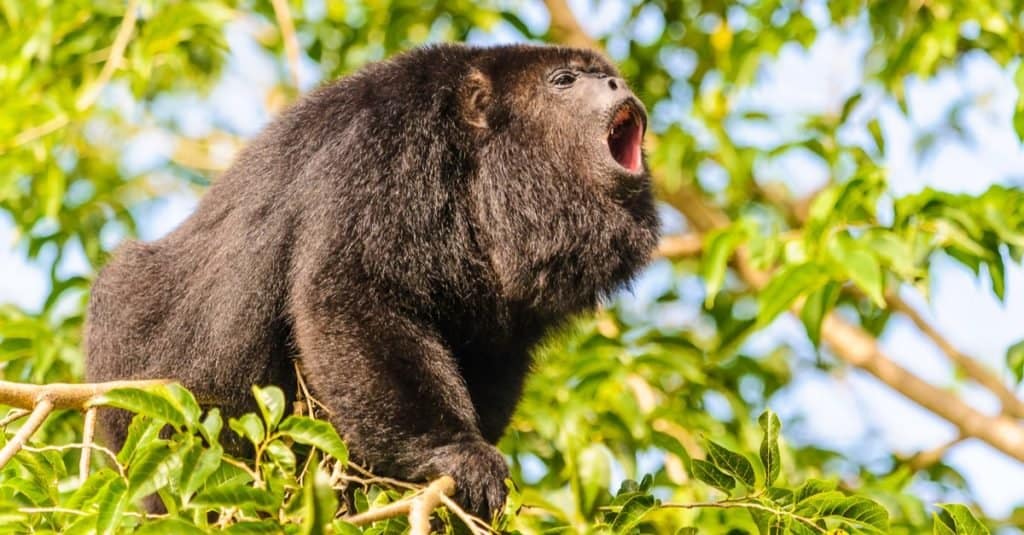Loudest animal on earth: The title itself sparks intrigue. Determining the planet’s loudest creature presents a significant challenge, demanding careful consideration of sound intensity measurement, environmental factors, and the unique vocalizations of diverse species. This investigation delves into the complexities of decibel scales, frequency variations, and distance-related attenuation, ultimately exploring the contenders for this remarkable accolade.
The difficulty in objectively measuring sound across different habitats and species is substantial. Decibel levels, while a common metric, don’t fully capture the nuances of perceived loudness, which is influenced by factors such as the frequency of the sound and the distance from the source. Different methodologies exist for measuring animal sounds, each with inherent strengths and limitations, adding another layer of complexity to the quest for the loudest animal.
Defining “Loudest”: Objective Measurement Challenges
Determining the loudest animal on Earth presents significant challenges due to the inherent difficulties in objectively measuring sound intensity across diverse species and environments. Variations in sound propagation, measurement techniques, and the subjective nature of “loudness” complicate any direct comparison.
The sperm whale, known for its deep-sea dives, isn’t just a master of the ocean depths; its clicks are among the loudest sounds produced by any animal. Interestingly, the sheer power of these clicks is comparable to the raw power often associated with customized vehicles, such as those featured on sites like kountry wayne cars , though on a vastly different scale.
The whale’s sonic blasts, reaching levels that can stun prey, are a testament to nature’s impressive acoustic capabilities.
The Decibel Scale and its Limitations
Sound intensity is typically measured in decibels (dB), a logarithmic scale representing the ratio of a sound’s pressure to a reference pressure. A 10 dB increase signifies a tenfold increase in sound pressure level. However, the decibel scale doesn’t fully capture the complexities of animal vocalizations. Different frequencies affect perceived loudness, and the same decibel reading can represent vastly different auditory experiences depending on the frequency composition of the sound.
Factors Influencing Perceived Loudness

Source: a-z-animals.com
Frequency plays a crucial role in perceived loudness. Humans, for example, are most sensitive to sounds in the mid-frequency range. Animals with vocalizations outside this range may produce sounds with high decibel readings but be less perceptually loud to humans. Distance also significantly impacts sound intensity, as sound energy dissipates with distance from the source. Environmental factors like temperature, humidity, and the presence of obstacles further complicate accurate measurements.
Comparison of Sound Measurement Methods

Source: worldatlas.com
| Method | Description | Strengths | Weaknesses |
|---|---|---|---|
| Hydrophone Recordings (underwater) | Underwater microphones measure sound pressure levels in aquatic environments. | Accurate measurement of underwater sounds, suitable for marine animals. | Limited range, susceptible to noise interference, requires specialized equipment. |
| Sound Level Meters (terrestrial) | Standard instruments measure sound pressure levels in air. | Widely available, relatively inexpensive, simple to use. | Limited frequency range, affected by environmental factors, requires proximity to the sound source. |
| Acoustic Modeling | Computer simulations predict sound propagation based on environmental factors and sound source characteristics. | Allows for estimations at distances beyond direct measurement capabilities. | Relies on accurate input data, model accuracy depends on environmental assumptions. |
| Bioacoustic Analysis | Analyzes the frequency, duration, and other characteristics of animal vocalizations. | Provides insights into communication strategies and behavior, complements sound level measurements. | Doesn’t directly measure sound intensity, relies on interpretation of complex acoustic data. |
The Sperm Whale’s Clicks: A Case Study
Sperm whales are known for producing extremely powerful clicks used for echolocation, navigating, and communication. These clicks are generated by the phonic lips, specialized structures in the whale’s nasal passages.
Mechanism, Purpose, and Intensity of Sperm Whale Clicks
The mechanism involves forcing air through the nasal passages, creating a high-pressure pulse that generates the click. These clicks are highly directional and can travel long distances underwater. Their purpose is primarily echolocation, allowing sperm whales to locate prey such as squid in the deep ocean. The intensity of these clicks can reach over 230 dB, making them among the loudest sounds produced by any animal.
Comparison to Other Loud Animal Sounds
While the exact sound pressure levels of sperm whale clicks are difficult to definitively quantify due to the challenges mentioned earlier, they are widely considered to be among the loudest, exceeding the sounds produced by blue whales (up to 188 dB), howler monkeys (up to 140 dB), and even some man-made machinery. The immense pressure generated by these clicks allows them to penetrate deep into the ocean depths, reflecting off objects and providing the whale with detailed information about its surroundings.
Hypothetical Experiment to Measure Sperm Whale Click Intensity, Loudest animal on earth
A hypothetical experiment to measure the sound intensity of sperm whale clicks at various distances would involve deploying an array of hydrophones at increasing distances from a known sperm whale location. The hydrophones would record the clicks, and the resulting data would be analyzed to determine the sound pressure level at each distance. The experiment would need to account for environmental factors such as water temperature, salinity, and currents to ensure accurate measurements.
Multiple recordings would be needed to account for variability in click intensity.
Ultimate Conclusion: Loudest Animal On Earth
While definitively crowning the loudest animal on Earth remains elusive due to methodological challenges and the vast diversity of animal vocalizations, the journey to identify the top contenders is a fascinating exploration of bioacoustics and the remarkable abilities of the animal kingdom. The sperm whale’s powerful clicks stand out as a prime example of extreme sound production in the ocean depths, highlighting the intricate adaptations of marine mammals.
Further research, utilizing advanced technologies and standardized measurement protocols, will undoubtedly refine our understanding of this intriguing biological phenomenon.
